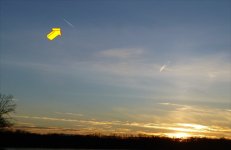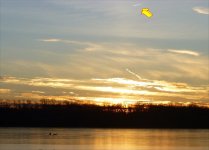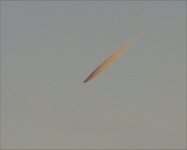nomad 11
Bronze Member
well the way i see it. if it falls from the heavens God sent it to ya. it should be urs to keep
Follow along with the video below to see how to install our site as a web app on your home screen.
Note: This feature may not be available in some browsers.
US law is not as @SanMan recollects. BLM last issued guidance (as an Instruction Memorandum, not as legislation) covering meteorite collection in 2012, which is published here:
https://www.blm.gov/policy/im-2012-182
Note that there are circumstances where you can collect on certain types of public land, subject to a maximum of 10 pounds per person per year. and some other restrictions. This is for casual personal collection only and the collected material may not be bartered or sold. It is also possible to obtain a permit (subject to a fee) from a local BLM office for commercial collection, where the 10 pound limit doesn't apply. Individual States and other jurisdiction are of course perfectly entitled to ignore the BLM Instruction Memorandum and impose additional restrictions. Some of them do, but most do not.
The original story on this thread has so many holes in it that I don't believe it to be in any way accurate, for reasons I will cover in a separate post.
Instruction Memorandum No. 2012-182
Expires: 09/30/2013
Question for you experts.. about three weeks ago I went to the grocery store just after dusk, and I was walking through the parking lot when something traced across the sky in front of me from an east to west direction. It was not dark dark out - maybe the first couple of stars were out. It was no shooting star out in the heavens, it was something going through our atmosphere, and was super bright and did a flash after going across what I would guess to be about 40% across the skyscape above me. Obviously I don’t know if it was a meteorite, could have been space trash for all I know, but hypothetically speaking, if it were, how far away would that have landed from me if it was within such viewing range? 20 miles away? 500 miles? Was contemplating that after the fact.
This is an interesting website to spend some time on..once you find a fireball sighting of interest, you can look at a map showing the trajectory and calculated impact (based on multiple sightings from different locations). Kind of a neat project.
https://fireball.amsmeteors.org
If you see something chances are other people did.. possibly hundreds of miles away.



If you read the internal policy "Instruction Memorandum" you linked to you would know it was not ever a law and it expired at the end of September 2013. It's right there at the top.
Casual collection by the public is permitted as you noted. It's the same regulations regarding casual collection by the public of any mineral or rock substance found on the public lands. Not even sure why the Assistant Director, Renewable Resources and Planning would bother writing this memorandum. It's outside of his job description and it didn't change any existing law or regulation. Mission creep I suppose. In any case that memorandum expired seven years ago.
BLM managed lands are not owned by the BLM. By definition they are public lands owned by the people of the United States. You can discover, mine and patent mineral deposits of meteorites of any size without a permit.
As I said, that BLM document was an Instruction Memorandum (ie policy guidance) and I did specifically say that it was NOT legislation. This was the first time that BLM went into print in a (largely failed) attempt to clarify the position as they saw it. Although it has expired on paper, the problem with these kinds of guidance documents is that they often continue to be used as guidance in some areas in the absence of anything more definitive.
Most state laws assert that a meteorite find belongs to the landowner of the land upon which the meteorite was found. Many state courts have interpreted their laws as granting the state sole title to any meteorite recovered on state-owned lands. Laws regarding recovery of meteorites on federally owned public lands is ‘unsettled’ but the federal government has historically asserted title to all LARGE meteorites (without a proper definition of ‘large’) found on federal land, because:
- the meteorite is the property of the federal government (as the landowner)
- meteorites found on public lands are subject to the 1906 Antiquities Act (16 U.S.C. 432)
- a meteorite does not qualify as a “valuable mineral” as defined under the 1872 Mining Law, and thus it is not subject to mineral claim rights that could otherwise be filed by the discoverer.
The law is ambiguous regarding ownership of meteorites found on public lands that are managed by the Bureau of Land Management (I did not say that BLM owned such lands). Some BLM offices consider meteorites to be artifacts, and thus regard them as government property, but the vast majority of BLM offices do not.
In the case of SMALL meteorites (without a proper definition of ‘small’), ownership of those found on federal land is not covered in the Code of Federal Regulations. These kinds of ambiguity are the reasons why BLM attempted to clarify their own position in their 2012 Instruction memorandum. BLM has also argued in the past that they have the same legal standing as a private landowner and that, under the 1906 Antiquities Act, all meteorites found on BLM land belong to the Smithsonian Institution.
It’s a mess. You’re always in a more secure (or at least less contentious) position if you hunt on privately-owned land which is either yours or for which you have landowner permission.
If you can provide links to any documentation that further clarifies today’s position it would be appreciated.
I’m unconvinced it’s as cut and dried as you say. In both of the judgements you referenced the meteorite concerned was on private land, about which we are agreed. The meteorite belongs to the landowner. Although those cases are oft-cited they were, as you said, ‘no-brainers’ but not necessarily catch-all precedents when the land is not in private ownership.
For the Iowa aerolite (Goddard v Winchell), the issue was that the meteorite fell on privately-owned land belonging to Goddard, but he had leased it for the year 1890 to James Eleckson for grazing. The meteorite fell during the leasing period and, immediately after the fall, Eleckson hired someone to dig it out and then sold it to H.V. Winchell. The judgement was about Goddard’s rights as the landowner versus Eleckson’s right to have claimed it (and sold it to Winchell) because he had a lease on the land. Quite rightly, the court found against Winchell.
For the Willamette meteorite (Oregon Iron Company v Hughes), the illegitimate claim of ownership was even more blatant. The meteorite had fallen (on an unknown date) on land privately owned by the Oregon Iron and Steel Company. The settler Ellis Hughes recognised the possible value/importance of it, secretly hauled it three quarters of a mile onto his own land and then claimed it was his. Again, quite rightly, the court found against Hughes.
No matter whether we agree or not. It's an interesting discussion and I would suspect we haven't seen the last of situations requiring a court to decide.

